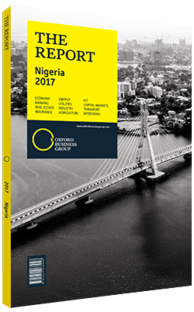New public transport options aim to ease traffic congestion in Nigeria
There are a wide variety of urban mass transit options in Nigeria, with many of these services privately run. Options in large cities include regular taxis, ride-sharing services, motorcycle cabs, rickshaws and minibus services.
However, when it comes to public transport, the choices and routes are more limited. There are some public services in the country, such as Lagos’ LAGBUS, which commenced operations in 2007, and now oversees a network of approximately 500 buses offering 40 different routes; however, it is the city’s estimated 75,000 minibuses that transport the majority of passengers around Lagos.
Boosting Public Offerings
The state government in Lagos is looking to address the current transport shortage by expanding its public offerings, which should in turn reduce congestion and transit costs. An example of this is Lagos’ bus rapid transit system, which consists of 22 km of dedicated roads for bus services. The service, which runs 16 hours per day throughout key parts of the city, has an average daily ridership of 180,000.
There are also discussions under way over overhauling the city’s existing bus service and limiting the use of private minibuses. According to Frederic Oladeinde, head of corporate and investment planning at the Lagos Metropolitan Area Transport Authority, authorities are considering discontinuing the city’s LAGBUS service, and transferring its functions to Lagos Bus Service, the state’s bus regulator. It plans to ban minibuses and buy 5000 new buses to replace them. “The 75,000 minibuses in operation are inefficient,” Oladeinde told OBG. “Some 5000 well-spaced buses would be injected by the Lagos State government into the public transport space to start the bus reform programme.”
Taking some 70,000 vehicles off the city’s roads could go a long way to easing traffic congestion issues; however, as happened when the city limited motorcycle taxi activity to certain areas, there are concerns it may spark a backlash from the large community of minibus drivers. The plan is to encourage people to swap old minibuses for an equity stake in the new system, while it is hoped that existing drivers will also come onboard, both as drivers of the new buses and as mechanics.
Light Rail System
The city is also working to develop seven new light rail lines: the 27-km blue line running from Okokomaiko to Marina; the 31-km red line (Agbado to Marina via Iddo and Murtala Mohammed International Airport); the 6-km red extension (to local and international wings of the airport); the 26-km green line (Marina to the proposed Lekki Airport); the 34-km yellow line (Otta to Iddo); the 6-km purple line (Redemption Camp to Ojo); the 42-km orange line (Redemption Camp to Marina); and the 20-km brown line (Mile 12 to Marina). The blue and red lines have been identified as priority routes, with the blue line expected to be the first operational line of the light rail system (see analysis). However, the line has experienced a number of delays, and is now expected to be operational in 2018 at the earliest. Similar projects are also under way in Kano State, where the government has signed $1.8bn in contracts with the China Railway Construction Corporation (CRCC), and in Abuja, with the CRCC expected to finish the project by early 2018.
Waterborne
Due to its lagoon and rivers, Lagos differs from other cities in Nigeria, and as such its traffic profile differs from inland cities where mass transport options are limited to roads and rail. The Lagos State Waterways Authority hopes to revive a ferry network, while Ropeways Transport is seeking to build a three-route system of gondolas, based on a similar operation in Caracas, Venezuela. These services would transport passengers to the city’s central business district, providing a waterborne link between Lagos’ islands and the mainland.
You have reached the limit of premium articles you can view for free.
Choose from the options below to purchase print or digital editions of our Reports. You can also purchase a website subscription giving you unlimited access to all of our Reports online for 12 months.
If you have already purchased this Report or have a website subscription, please login to continue.

